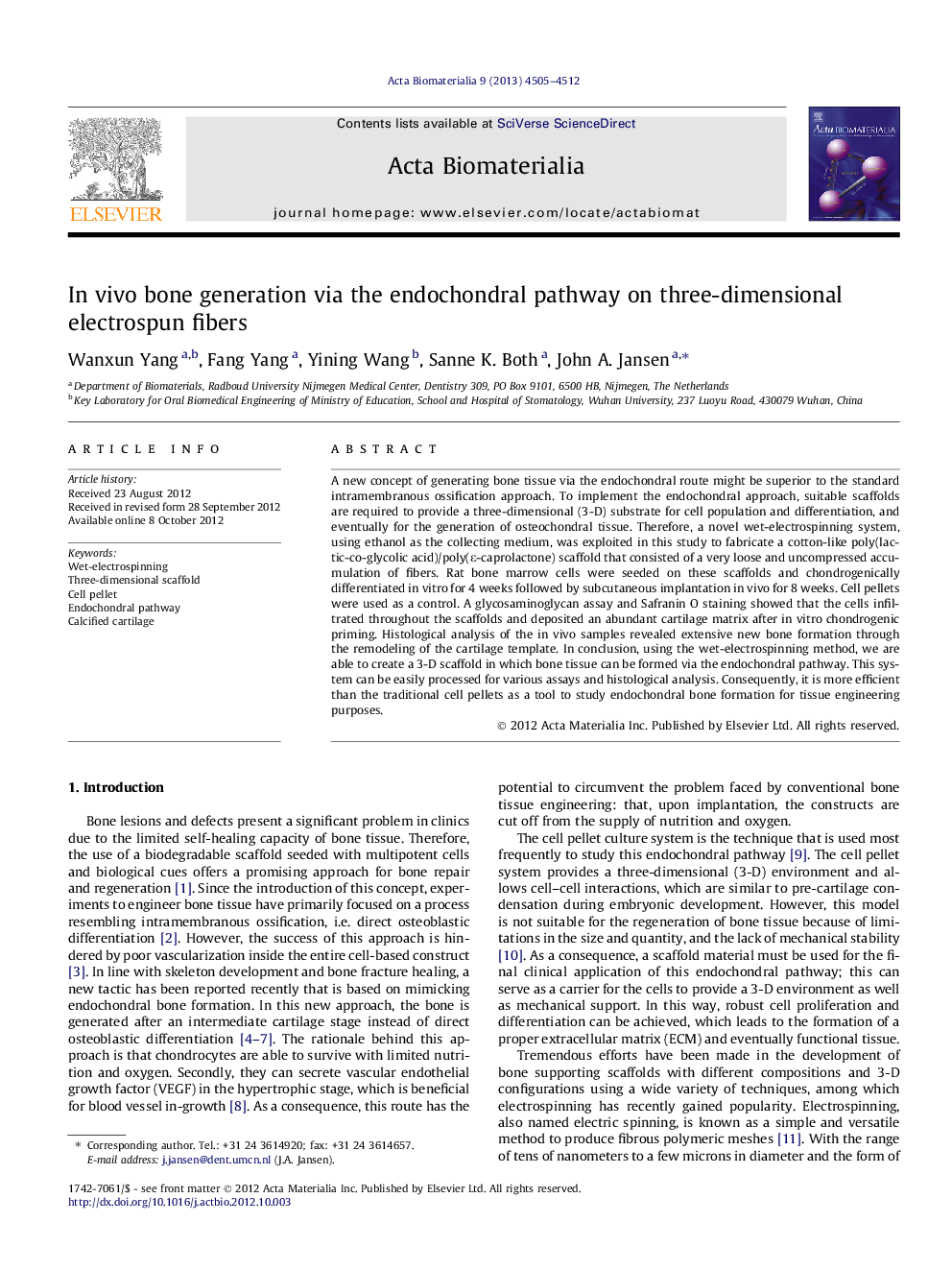| Article ID | Journal | Published Year | Pages | File Type |
|---|---|---|---|---|
| 903 | Acta Biomaterialia | 2013 | 8 Pages |
A new concept of generating bone tissue via the endochondral route might be superior to the standard intramembranous ossification approach. To implement the endochondral approach, suitable scaffolds are required to provide a three-dimensional (3-D) substrate for cell population and differentiation, and eventually for the generation of osteochondral tissue. Therefore, a novel wet-electrospinning system, using ethanol as the collecting medium, was exploited in this study to fabricate a cotton-like poly(lactic-co-glycolic acid)/poly(ε-caprolactone) scaffold that consisted of a very loose and uncompressed accumulation of fibers. Rat bone marrow cells were seeded on these scaffolds and chondrogenically differentiated in vitro for 4 weeks followed by subcutaneous implantation in vivo for 8 weeks. Cell pellets were used as a control. A glycosaminoglycan assay and Safranin O staining showed that the cells infiltrated throughout the scaffolds and deposited an abundant cartilage matrix after in vitro chondrogenic priming. Histological analysis of the in vivo samples revealed extensive new bone formation through the remodeling of the cartilage template. In conclusion, using the wet-electrospinning method, we are able to create a 3-D scaffold in which bone tissue can be formed via the endochondral pathway. This system can be easily processed for various assays and histological analysis. Consequently, it is more efficient than the traditional cell pellets as a tool to study endochondral bone formation for tissue engineering purposes.
Graphical abstractFigure optionsDownload full-size imageDownload high-quality image (251 K)Download as PowerPoint slide
